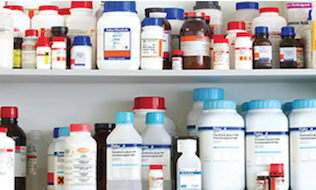

In employee benefits plans, maximums and caps on prescription drug dispensing fees are common cost management features.
These features are designed to nudge plan members to purchase prescription drugs at pharmacies with lower dispensing fees, lowering their out-of-pocket costs, as well as potentially reducing plan costs for employers. For example, where a drug plan has a $5 dispensing fee maximum, a plan member has a financial incentive to shop for lower dispensing fees.
In theory, this is a great cost management option, but it’s based on the assumption that the dispensing fee is the only cost variable and that all other components — which make up the full retail price of prescription drugs, including ingredient costs and wholesale and retail markups — are the same from one pharmacy to the next.
Read: 2019 Drug Plan Trends Report: What’s next for drug plans?
Shopping at a pharmacy with lower dispensing fees doesn’t guarantee the total drug cost will be lower than a pharmacy with higher dispensing fees. In most provinces, the difference in dispensing fees across pharmacies is typically less than $4, which — depending on the drug — may be far less than the difference in the ingredient cost and markups.
Encouraging plan members to shop based solely on dispensing fees also assumes the quality of services provided by pharmacists are equal, interchangeable and have little impact on treatment outcomes and patient health. As with all professions, not all pharmacists are the same; therefore, saving a few bucks on dispensing fees shouldn’t necessarily be the driving factor in choosing a pharmacist.
A person’s relationship with their pharmacist can be an important part of their health-care network, especially for patients with chronic health conditions who need to take multiple medications to manage their health. Pharmacists provide vital information and advice about taking medications including — in some cases — avoiding certain foods and herbal supplements that may interact or reduce the impact and safety of the medication.
Read: UBC study uses pharmacists in preventative approach to heart health
While maximums on dispensing fees aim to save employers money by shifting drug plan costs to employees, it remains to be seen how effective it is at influencing plan member decisions related to drug purchases. Some individuals may not have disposable income to afford medications, so the low dispensing fee can make a difference. Also, it may be an incentive for a plan member with multiple chronic issues and a handful of daily prescriptions, but it’s unlikely to sway the vast majority of plan members who don’t have the time to compare dispensing fees or go out of their way to save a few of dollars.
“When it comes to managing drug costs, employers basically have two levers: either change what’s covered or how much is covered,” says Martin Chung, assistant vice-president of strategic health management at Equitable Life Insurance Co. He argues that the dispensing fee maximum isn’t as important as it was in the past, noting it’s increasingly important to manage future inflation through more meaningful controls based on clinical and cost-effective use of medications.
Some in the industry debate whether drug plan co-insurance will actually change plan member behaviour and manage costs, since the impact doesn’t erode as drug costs increase like a dispensing fee maximum or flat dollar per prescription deductible. If a plan member has to pay 10 or 20 per cent of the total drug cost, they’re more likely to ask their doctor or pharmacist if there’s a drug that’s lower in cost and equally effective.
Read: The $25 deductible: A useful tool or no longer relevant?
Employers concerned with the effect a co-insurance might have on employees taking life-changing, high-cost drugs could consider an annual out-of-pocket drug maximum to reduce financial hardship.
With rising drug costs, employers are under a tremendous amount of pressure to manage drug costs and future inflation without affecting employee health. However, many cost management options are available, such as dispensing fee frequency limits, mandatory generic substitution, managed formulas and the use of biosimilars.
